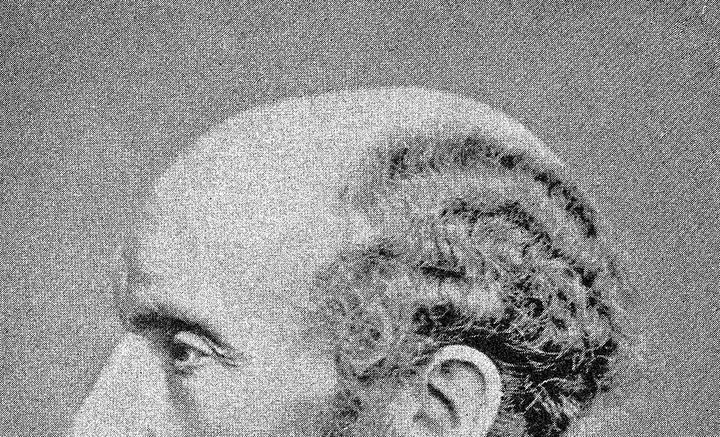America is Not Where Marxism Goes to Die
A new history dismantles the conventional wisdom—and implicit premise of much pessimistic critical theory—that Marx’s ideas never gained ground in America.

Review of Andrew Hartman, Karl Marx in America (University of Chicago: 2025).
America is where Marxism and socialism go to die. So goes a long running bit of folk wisdom, embraced by many a leftist, liberal, and conservative alike.
Plenty of explanations for this state of affairs have been given. Werner Sombart famously quipped that America’s material prosperity was such that class consciousness crashed straight into the shoals of roast beef and apple pie. The critical theorists of the Frankfurt School offered more pessimistic takes. By the mid-twentieth century, the cultural industries of American capitalism had become so powerful and pervasive that even workers no longer recognized—or worse, even cared—about their subordination or that of their fellows. Glued to Apprentice reruns and incapable of processing anything more profound than a minute long TikTok rant or the deepest thoughts of Charlie Kirk, one-dimensional Americans were destined for meek compliance at best or fascist mobilization at worst. To evoke Walter Benjamin, how could a country so addicted to entertainment resist the fascist siren call for society to become a form of violent entertainment for itself? Idiocracy wasn’t just a film but the future. Enjoy the toboggan ride.
Finally, skeptics have insisted that a country so riven by historical racism could never achieve the level of transracial working-class solidarity required for socialism—let alone Marxism—to resonate. This could even serve an ideological role. As then candidate Hilary Clinton mused in 2016, would breaking up the big banks really end racism after all? Ironically this echoed longstanding conservative claims that even Nordic socialism was impossible in a racially heterogenous country where black and white McPloyees would never see enough of themselves in one another to fight together for healthcare.
Like many folktales, there has always been something fishy about this story. In American Democratic Socialism, Gary Dorrien rebuts Sombart by stressing the hard truth that there has always been more than enough suffering and injustice in the United States to mobilize socialist sympathies. The list of horrors is long: from antebellum slavery and Jim Crow, to the genocide of the indigenous peoples, to Dickensian working conditions for laborers throughout the Gilded Age and the militant crackdown on unionization efforts by a state-influenced by social Darwinism.
Not to diminish Dorrien’s herculean efforts, but this—the idea that idyllic American prosperity and social peace have simply lulled socialism to sleep—is the easier thesis to rebut. More difficult to crack is the critical theoretical viewpoint, so complementary to leftist pessimism and anti-Americanism, that the cultural hegemony of capital is simply too deeply entrenched in the United States for socialism to ever be more than a threatening fever dream of Ben Shapiro’s.
Karl Marx, American Icon?
Andrew Hartman’s Karl Marx in America is a mighty historical effort to trace the influence of Marx and Marxism on American politics: ranging from Marx’s own interventions for the New York Tribune to his accomplishing yet another Phoenix-like resurrection from the ashes after being declared dead in the 1990s. In 600 well-researched pages, Hartman dismantles the conventional wisdom—and implicit premise of much pessimistic critical theory—that socialism never gained ground in America.
During his long years of impoverished exile in Great Britain, the Marxes often struggled to make ends meet. Marx took a job writing for the New York Tribune as their European correspondent. Hartman notes that
Marx’s Tribune articles form the largest body of Marx’s published work. The newspaper published 487 of his articles, 350 solely written by him, 125 by Engels (as a favor to Marx), and twelve jointly. More to the point, Marx’s Tribune articles were read by infinitely more people during his lifetime than anything else he wrote (though most were published minus a byline).
These readers probably included Abraham Lincoln, an “avid reader” of the Tribune and one of the few world leaders Marx wrote a nice letter to. There are more than a few ironies in this. As William Harlan Hale noted, the Tribune, that “organ of respectable American Whigs and of their successors, the new Republican party, sustained Karl Marx over the years when he was mapping out his crowning tract of overthrow, Das Kapital.”
Hartman points out that Marx’s perspectives on America were complex and evolving, much like his shifting views on questions of reform and revolution and of whether socialism would emerge in developed or developing economies. At points Marx argued that the lack of feudalism in America might contribute to a sharpening of class conflict, as the stark contrast between the bourgeoisie and an emerging industrial proletariat would appear unvarnished with any lingering traces of medieval justificatory ideology. At other times Marx felt that the immense process of primitive accumulation taking place on the Western side of the continent, replete with the expropriation and genocide of the indigenous peoples, slowed down the march to socialism by dispersing a potential mass urban base.
From the beginning Marx advocated an end to antebellum slavery. This was for strategic reasons, and also out of a sense of moral revulsion. Hartman stresses the “important role Marx played in the crusade against slavery” by
helping persuade working-class radicals in Europe that the Union cause was theirs as well. Marx’s analysis helped crystallize the British working-class perspective in particular. At the outset of the war, many among the British elite desired an alliance with the Confederacy, since the booming English textile industry relied upon cheap, plentiful, slave-picked cotton from the South. Moreover, that elite’s unshakeable belief in hierarchy translated into tolerance for slavery. Abolitionism among them was often merely a cover for the desire to dominate the trans-Atlantic trade. In an 1861 letter, Marx excoriated the British press for echoing this acute hypocrisy.
A Specter is Haunting America
After his death Marx continued to wield influence among political figures across the American ideological spectrum. Much of the influence was positive. It included leftists and socialists like Eugene Debs and Michael Harrington, who embraced Marxism as a valuable (if flawed) critical tool. Prior to 1917 and again during the liberationist heydays of the 1960s, many saw a suitably rethought Marx as offering a reformist or revolutionary path to that most quintessentially American of goals: greater freedom.
Later American leftists like Russell Means rejected Marx as too old, too white, and too European during the halcyon days of identity politics. For Means, Marx was “yet another enabler of European conquest because Marx, like many others, sought to connect being, of the human spirit, to gaining, or the material world.” Even sympathetic critics like Black Marxist Cedric Robinson tended to foreground the uses of Marxism for what would come to be called “identity politics.” This wariness lingered until the Left rediscovered Marx’s merits after the 2008 Recession. Marx was the major influence on the emergence of “Millennial Socialism,” with his ideas influencing in more or less direct ways its organs like Jacobin magazine and the Democratic Socialists of America. Clearly a sympathizer, Hartman has both kind words and gentle criticism for recent American rejuvenated anti-capitalist and universalist politics.
The liberal reaction to Marx figures large in Hartman’s telling, though perhaps not as comprehensively as it should. Hartman notes that at their most sympathetic, liberals like Franklin and Eleanor Roosevelt worked to incorporate selective socialist insights into liberalism during the Great Depression. While this had the effect of shifting the overton window to the center-left, it also neutralized the potential for more radical challenges to the system. Hartman laments that by the 1950s, when there was a tentative treaty between labor and capital, liberalism had largely succeeded in neutralizing radical socialist energies. This left liberals free to declare Marx a dangerous false prophet preaching utopia and delivering totalitarianism in the mid-twentieth century. By the beginning of the twenty-first, liberals proclaimed that Marx was dead and must never come back.
Hartman is certainly right to stress the anti-Marxism and anti-socialism of many mainstream liberals. But to this day it is not universally so, and things may even be shifting. In the Shadow of Justice by Katrina Forrester chronicles the birth of “liberal egalitarianism” in the United States, which acknowledged no small debt to Marx and Marxism. Important liberal philosophers like Amartya Sen and Charles Mills were overt about the lessons liberalism had to learn from the nineteenth-century Prussian. In his Lectures on the History of Political Philosophy, the most influential American liberal thinker, John Rawls, describes Marx as a “heroic figure” and develops liberal socialist ideas inspired by him. Hartman is ambivalent about the radical appeal of figures like Bernie Sanders, and looking deeper into liberal leftism would not only nuance his story but provide some theoretical insight into why a liberal-flavored democratic socialism could gain traction in the US.
Finally there are of course conservatives, who from the beginning saw Marx less as a false prophet of the Enlightenment and more like the Anti-Christ himself. For many on the Right, Marxism and liberalism inexorably shaded into one another (a conflation still very much alive) in their rejection of divine sanction for natural hierarchy. More thoughtful conservatives read Marx as a symptom of longstanding metaphysical decline. As Hartman notes, these philosophically-minded conservatives often included former Marxists, from James Burnham to Bill Kristol and Leszek Kolakowski, who came to see communism and liberalism as two sides of a God that had failed. Both were fundamentally egalitarian, materialist offspring of the Enlightenment committed to the technical management of society through scientific reason. On this view managerial New Deal liberalism, and even Obamism, were just longer roads to socialist serfdom than unadulterated Marxism.
But of course these more interesting conservative critics were and are (very) few and far between. Most right-wing pundits emulate centrist liberals in “selectively interpreting Marx”, a thoughtless “habit” which has become a “full blown addiction” to many American critics of Marxism. Clearly little has changed, though Hartman might have further nuanced his text by accounting for the influence of far right Gramscianism à la Samuel Francis.
Uncancelling the Future
For a long time the only significant challenge to the conventional wisdom that Marx and socialism never gained ground in America came ironically from the far Right during various Red Scares. To this day one suspects that Jordan Peterson secretly believes communism won the Cold War, and it wasn’t even particularly close. How else could cultural Marxism be everywhere and in everything? Hartman’s epic history complements Dorrien and others who complicate this story from the Left. For Hartman, Marx and an aspiration for socialism may never have been the main driving ideological force in American politics. But they’ve never been out of the conversation and might become vocal forces as inequality worsens and the threat of right-wing authoritarianism looms.
Ironically, Hartman notes that Marxism will never go away so long as capitalism continues to produce the kinds of misery Marx described: “as long as capitalism persists, Marx cannot be killed.” Perhaps the best way for conservatives to finally bury Marx will be to simply let capitalism die so its greatest critic can follow it into the grave. A steep price, but one I’m willing to pay.
There is plenty to criticize in Hartman’s book. I already mentioned his rather skewed discussion of liberalism’s reception of Marx, which has been better theorized by Marxist philosophers like Tony Smith in Beyond Liberal Egalitarianism. I’d add that Hartman is clearly more sympathetic to some Marxist traditions than others. Perhaps as a historian, his heart naturally gravitates towards the more down-to-earth Marx of the historians and political activists than the speculative Marx of the moralists and the theorists. This is his purview, but it does slant Hartman’s readings of some important figures and movements.
For instance, he is generally suspicious of Marxist cultural theory, describing it as an “important transmission point in the decline of a political Marx”; these theorists are, in Hartman’s telling, “not blameless in Marx’s near erasure from revolutionary discourse.” Even the late, great Fredric Jameson comes under fire for his “hidden role in this ironic development.” On Hartman’s reading the cultural turn in Marxism relegated it to an acceptable place in the powdery American academy at the price of neutering its political potential. Reading Marx with Lacan to finish one’s thesis requirements became a substitute for reading Marx to change the world.
This strikes me as reductive. As I’ve said before, we should be wary of arguments that insist some forms of scholarly and theoretical intervention are more valuable than others. A better formula is “from each socialist thinker according to her abilities, and to each according to the rigor and impact of their case.” Much Marxist cultural theory can be pretentious and scholastic, just as too much Marxist historiography has given into economic determinism and revolutionary affectation. But at its best, as in the work of Jameson, Marxist cultural theory offers key insights into how hegemonic cultural logics operate under capitalist conditions to both reflect social relations and to reify and entrench them. But Jameson in particular was more than just a sharp, vital critic. Far from a snob, he showed how popular genres like fantasy and science fiction can be aesthetic vehicles for repressed hopes and aspirations for a better world. In Archaeologies of the Future Jameson points to a kind of art that rejects the repetitive, reactionary pastiche of post-modernity for one offering an imaginative vision of alternatives. Such an art could indeed be radical if the challenge is taken up.
But these are minor quibbles. Despite inevitable flaws, Karl Marx in America is about as comprehensive a history of its subject as one could want. It is a book many of us had long hoped would one day arrive, and now it is here and the hopes are vindicated. Whether Marx will ever get a fair hearing in the United States is an open question; that he has been and will remain an important figure in its discourse is now a closed one.
■
Matt McManus is an incoming Assistant Professor at Spelman College and the author of The Rise of Postmodern Conservatism and The Political Theory of Liberal Socialism amongst other books.



